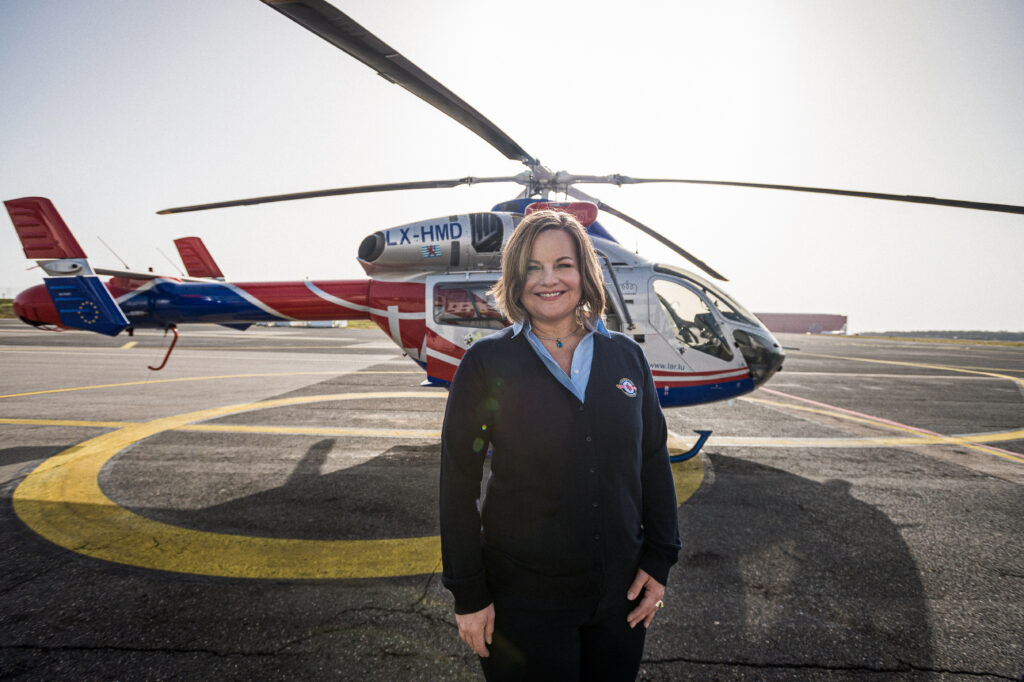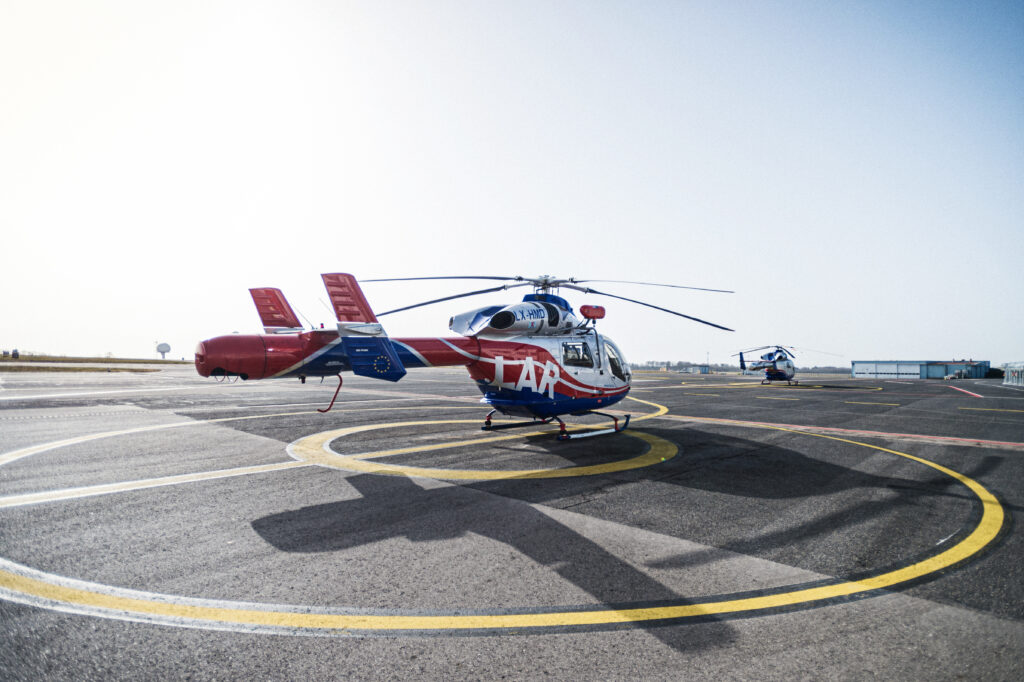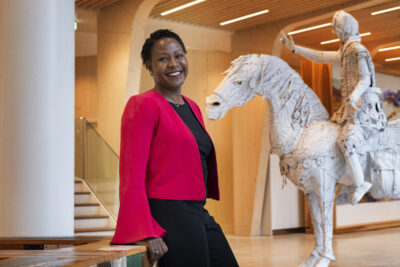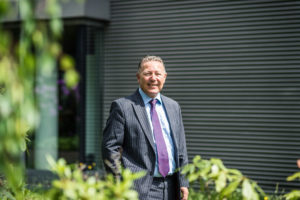And what if an ambulance happens to fly? As soon as the COVID-19 pandemic started to spread worldwide, Luxembourg Air Rescue (LAR) was called to the front line to airlift highly infectious patients. As a result of their outstanding cross-border collaboration, DRF Luftrettung and LAR were awarded the 2020 Adenauer-De Gaulle Prize by the French and German Governments.
“The call for assistance is a part of our duty and we proudly responded. We are used to dealing with high-pressure situations and working in exceptional circumstances, which means that we can be very agile and adapt quickly,” says Antje Voss, Head of Marketing & PR at Luxembourg Air Rescue.
For over 30 years, the company has been devoted to saving lives by operating rescue helicopters and ambulance jets in Luxembourg and around the world, using their own state-of-the-art intensive-care medical fleet staffed with LAR-pilots and an LAR-specialised medical team.
“With our subsidiary, Luxembourg Air Ambulance (LAA), we have a fleet of six MD-902 helicopters and six cutting-edge Learjet 45XR ambulance jets. In recent years, we have flown more than 52 million kilometres, the equivalent of almost 1,300 times around the world.”

In recent years, we have flown more than 52 million kilometres, the equivalent of almost 1,300 times around the world.
Air rescue without borders
Last spring, as the situation became dire in the North-East of France with hospitals stretched too thin to cope with the surge in the number of patients, the air ambulance company went into full support mode to help manage healthcare capacity.
“We told everybody we can help. We have the people and the right equipment on board.”
At the peak of the crisis, LAR started to operate transfers of French patients on behalf of the Luxembourg government to intensive care units in Luxembourg. Soon after, the cooperation continued on behalf of the French Health Authorities, with the transport of COVID-19 patients within France and also to Germany and back.

There are no political borders when it comes to air rescue.

Luxembourg Air Rescue has already transported a lot of COVID-19 patients and does not plan on stopping. Voss recalls: “We airlifted one patient to a hospital in Luxembourg and flew him back home after a few weeks once he recovered. It was something very special for us as we normally don’t get to see the patient a second time.”
Last February, the company extended its fight against the virus and one of its doctor was assigned to a medical team which went out to Portugal to help the country’s health service cope with fast-increasing hospitalisations
Innovation as a response

The Ebola crisis of 2015 in particular gave us a very valuable insight into the transport of highly infectious patients.
COVID-19 is not their first run-in with viral outbreaks, so when the pandemic started to surge, the company and staff were already well-prepared.
“The Ebola crisis of 2015 in particular gave us a very valuable insight into the transport of highly infectious patients. At that time, our medical team developed a tent-like Infectious Disease Module that can be installed within 2 hours for the safe transport of patients. The air is filtered and the whole crew – doctor, nurse and pilot – is protected. It has since been quickly adapted for the transport of COVID-19 patients.”

At that time, Luxembourg Air Rescue was one of the only two companies worldwide able to transport patients affected by the Ebola virus.
The current pandemic highlights the challenges air ambulance services are facing when transporting highly infectious patients for several hours in enclosed spaces.
“Special situations, such as tackling the highly contagious Coronavirus, require special measures and one has to be on constant alert to what is a fast-evolving situation. Despite the fact that we had already much of the required equipment, we decided to invest in an “EpiShuttle” to provide even better protection for the crew and the patients” says Voss.
An EpiShuttle is an isolation stretcher under a transparent plastic dome. Air-tight tubing connects the patient to an intensive care ventilation system so that the patient can be treated and monitored at the same time.

A further advantage is that the lengthy and complex disinfection of the helicopter cabin is no longer necessary.
“A further advantage is that the lengthy and complex disinfection of the helicopter cabin is no longer necessary. This means turnarounds following missions are now much faster.”
Furthermore, two additional Isolation Chambers have been purchased with the support of the COVID-19 foundation, under the aegis of the Fondation de Luxembourg, for the transport of highly infectious patients in LAR’s ambulance jets.
Expanding the aircraft portfolio
Challenges abound for LAR. The pandemic has complicated the operating processes, which now require a lengthy logistical planning.
“Last week, we had a repatriation mission to Rwanda. In the past, we would need between three or four hours to plan such a mission, but now it is taking two or three days because of the difficulty getting overflight and landing permissions during the pandemic.”

In the past, we would need between three or four hours to plan such a mission, but now it is taking two or three days because of the difficulty getting overflight and landing permissions during the pandemic.
Never let a good crisis go to waste. To help cope with the new hurdles involved in transporting highly infectious patients and managing crew rest times for long journeys, the company decided to adapt its fleet and replace two of its Learjets with a long-range Challenger 605 aircraft.
“It has twice the range of the Learjet, meaning that fuel stops every 4,500 km are no longer necessary.”
The aircraft can also accommodate a double crew allowing the team to pick up a patient and transport him back in one journey without needing to overnight.
Resilience in the face of challenges
Even in such a crisis situation, the company has been hard at work running other operations.
“What has changed is that we operate fewer medical repatriation flights because of the impact on the tourist business, the travel restrictions and quarantine requirements, which are in place all over the world. Everything else is just like before.”
For over 15 years, the company has had a cross-border collaboration with Germany, dedicated to missions in Rhineland-Palatinate and Saarland. In addition, it holds the exclusive contract for the delivery of organ transplants – recently renewed for five years – for the whole of France excluding Paris.
“We frequently transport livers, hearts and other vital organs. We also intervene daily for serious emergencies in Luxembourg,, as well as in Saarland and Rhineland-Palatinate.”
In cooperation with the Luxembourg government and NATO, LAR is also being called on to ensure the medical repatriation of NATO members.
The air ambulance industry has proven time and time again that it is resilient and most important of all, that it is adaptable. Voss is confident about what the future holds: “The crisis has amply demonstrated again LAR’s ability to adapt, innovate and improvise as new challenges arise in the future. We will remain as passionate about our work as we were when we started. That passion has driven our success and we intend to keep that flame alive.”

We will remain as passionate about our work as we were when we started. That passion has driven our success and we intend to keep that flame alive.






